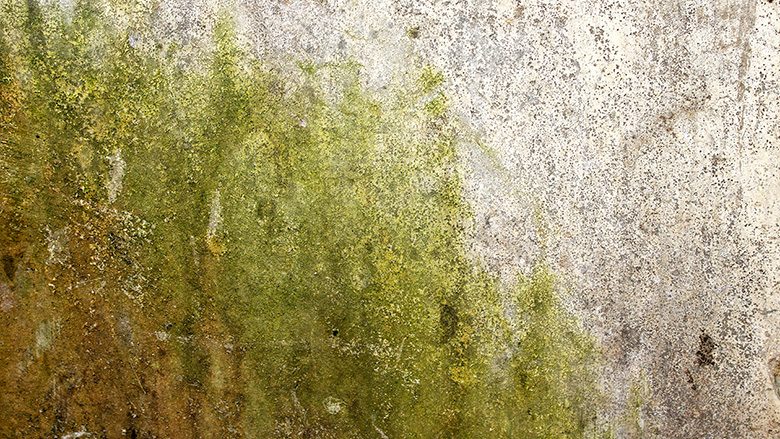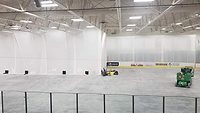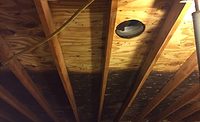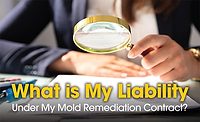Media Watch: What ‘The Bear’ Got Right and Wrong about Mold Remediation

The portrayal of various professions in the media, like business and restaurant ownership, often involves exaggerations, errors of omission, and inaccuracies. While the new hit show, “The Bear,” does an excellent job portraying various aspects of the restaurant industry, including real challenges owners face daily, it also oversimplifies aspects of keeping a restaurant up to code, like mold remediation.
In Season 2, Episode 2 of “The Bear”, viewers witnessed a dramatic turn of events when the restaurant walls began to crumble due to an undiscovered mold problem. This scenario provides an excellent opportunity to discuss what the show got right about mold remediation, what it misrepresents, and how to address misleading information and public misperceptions.
What "The Bear" Got Right
After discovering a brown substance staining the walls of the “Mr. Beef” restaurant in “The Bear”, the staff accurately portrays the urgency and seriousness of mold contamination in a restaurant setting. These steps include immediately halting work and consulting a professional to confirm the contamination, and ultimately ripping the walls down shortly after learning that mold contamination can cause unforeseen delays in construction along with unbudgeted costs.
During mold remediation, it’s crucial to take safety measures to protect staff and patrons. To do so, a containment barrier should be erected. Often, this involves the placement of a 6-mil plastic to isolate the work area from the rest of the business. The use of air scrubbers equipped with HEPA filters placed inside containment under negative air pressure as well as Air scrubbers outside the containment area to help prevent cross-contamination. Once remediation begins, only properly trained individuals wearing the required personal protective equipment (PPE) should enter the mold containment area.
Mold in food establishments can have significant health implications for staff and customers, potentially leading to allergic reactions, respiratory problems, and more severe health issues for immunocompromised people. The most common health concerns include allergic reactions and toxic symptoms, which will affect individuals differently case by case. Allergic reactions can range from a stuffy nose, sneezing, and headache to sinus drainage and respiratory issues. Toxic symptoms are more severe and can affect individuals who have reached a hypersensitive state due to repeated exposure and the build-up of toxins in a person’s system.
What "The Bear" Got Wrong
While “The Bear” successfully sheds light on mold issues in restaurants, it oversimplifies the remediation process. Addressing mold contamination, particularly in a commercial kitchen, is a complex task that often takes time. The show creates the impression that remediation can be handled quickly and with minimal disruption, which is often not the case. Ultimately, prevention is the first step to avoid mold remediation in restaurants, something “The Bear” failed to address before jumping into a renovation.
Mold is a secondary damage due to an unmitigated water loss or an unknown water leak. While some molds grow without a significant water source, water is one of the main ingredients to promote mold growth. To avoid mold issues, restaurants should conduct routine inspections on all equipment that uses water. If a leak is reported— for example, a dishwasher leak — it must be fixed immediately, and a water restoration company should be called to professionally dry the structure to prevent mold growth.
Following the discovery of an odorous area or suspicious growth, an industrial hygienist should be contacted immediately to sample and diagnose the growth. If remediation is needed, further outsourcing to a licensed mold contractor or an IICRC-certified firm is the next step.
Addressing Misleading Information and Public Misperceptions
While “The Bear” failed to touch on all crucial aspects of mold remediation, it’s important to remember the typical steps involved in the professional mold remediation process to avoid spreading misleading information and creating public misconceptions:
- Assessment and Sampling: Have a certified Industrial hygienist (IH) take samples to identify the mold and determine if remediation is required.
- Protocol Design: The IH will design a mold remediation protocol. It is recommended that the IH and the chosen mold contractor are independent of one another.
- Certified Professionals: Find a certified or licensed mold contractor to perform the remediation that was designed by the mold IH. It’s important to note that some states do not require mold contractors to be licensed.
- Work Plan: The mold contractor will put forth a work plan based on the requirements of the mold protocol. This work plan will outline the containments, decontamination chambers, what material is to be removed, and PPE that workers must wear.
- Clearance Testing: Once the mold remediation is completed per the mold protocol, the contractor will schedule clearance testing with the mold IH. Clearance testing can include air samples, tape samples, swabs and visuals to ensure the remediation followed the protocol and was successful.
- Next Steps: The containments will stay in place until test results are in and mold levels are determined to be normal. It's important to note that a mold count of zero is not feasible as some molds are needed for human survival. The IH will establish clearance requirements based on indoor environment standards.
- Reconstruction and Repair: Rebuild and ensure the water leak source has been fully repaired to avoid reoccurrence.
Conclusion
"The Bear" and similar shows highlight issues like mold contamination in restaurants. It's important to address inaccuracies in their depiction and understand the complexities of mold remediation for safe and effective handling. By promoting public education and collaborating with the media, we can raise awareness of public health concerns and create safer environments for everyone.
Looking for a reprint of this article?
From high-res PDFs to custom plaques, order your copy today!






